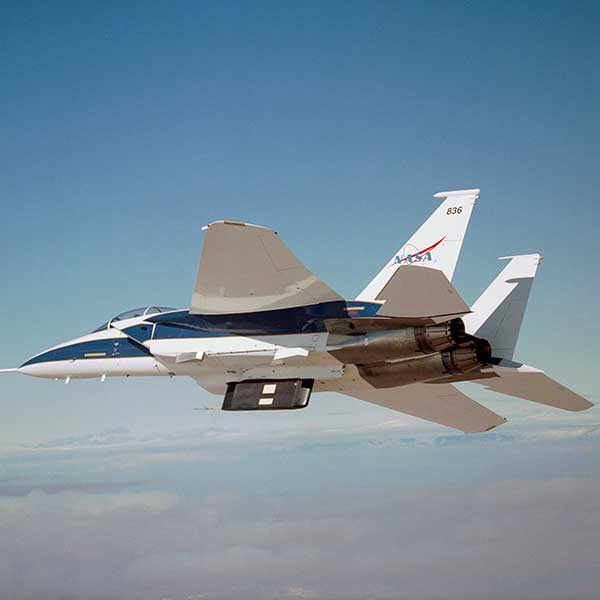NASA utilized a fleet of McDonnell Douglas F-15 Eagles.

The flight test effort, called the Lifting Insulating Foam Trajectory project, used a Dryden-designed foam ejection system installed in the F-15B’s flight test fixture to acquire data on how insulating foam debris or “divots” behaved when the small pieces were shed from shuttle external fuel tanks during launch. The F-15B tested the flight characteristics of the divots in a real flight environment at speeds up to Mach 2.
The F-15B Research Testbed continues to be an innovative and cost-effective tool for flight test of advanced propulsion concepts. Also known as #836, this is a modified twin-engine jet aircraft that provides NASA, industry, and universities with long-term capability for the efficient flight test of aerodynamic, instrumentation, propulsion, and other flight research experiments. This aircraft is a unique airborne resource, and is considered by researchers to be a virtual “flying wind tunnel” and reliable supersonic testbed.